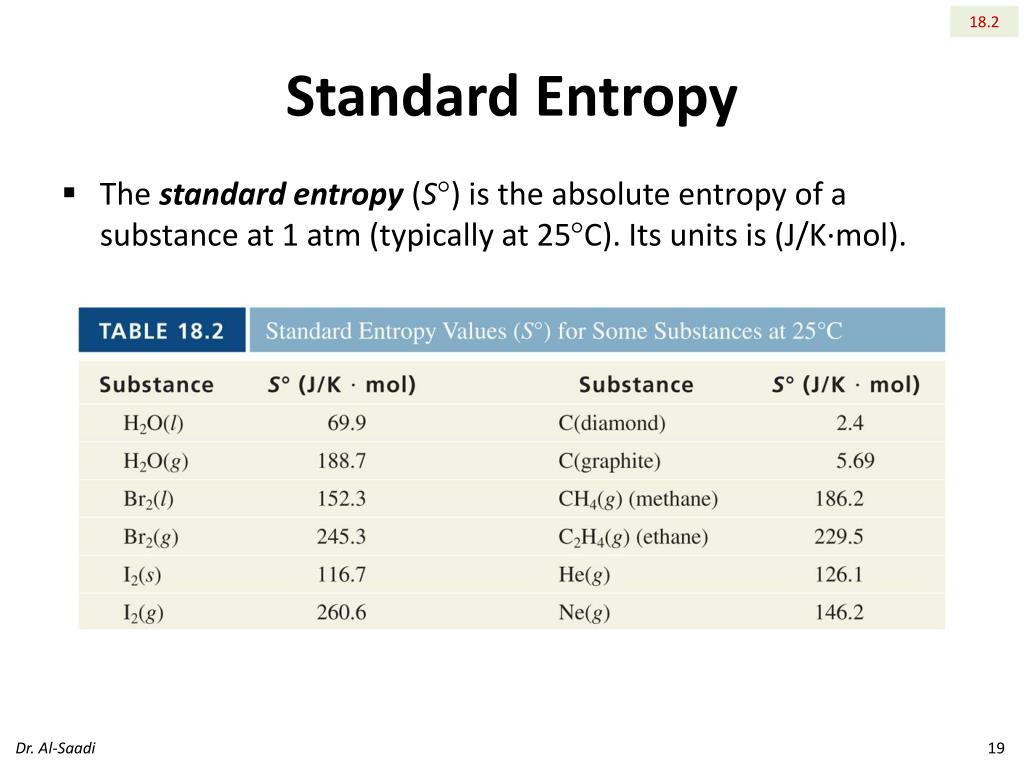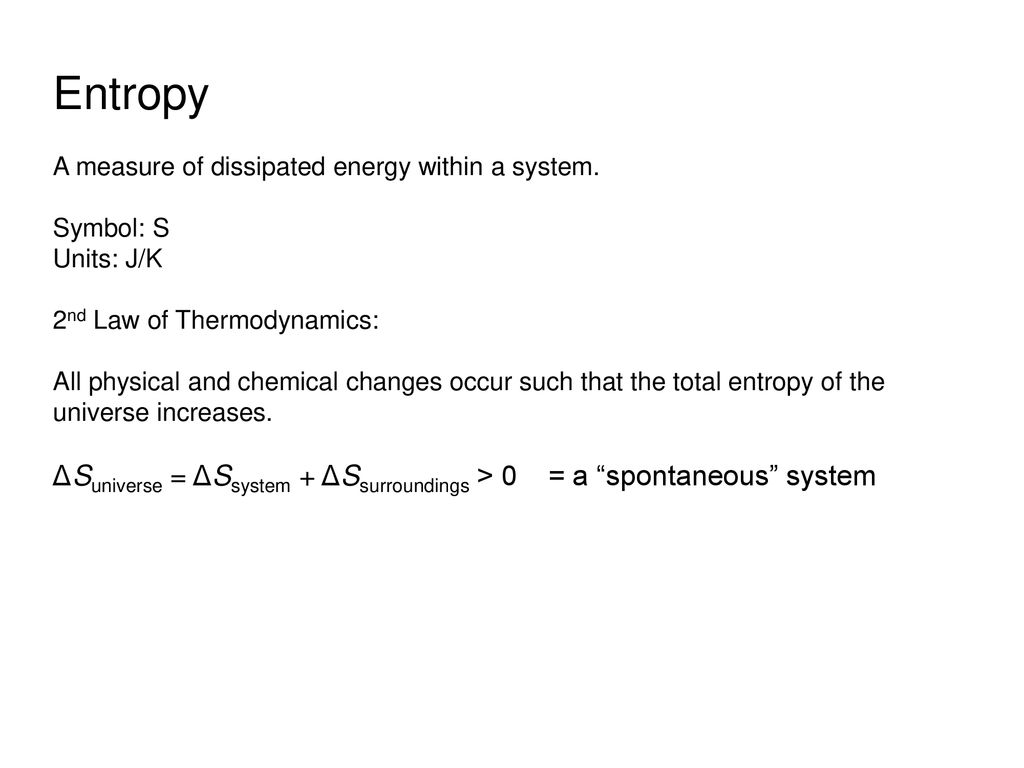

The system is more likely to contain two molecules in each subsystem (probability of 6/16 or 3/8), which is the equilibrium state-the most disordered state. Because each of these configurations is equally likely, the probability that the system will be found in its original configuration is only 1/16 (i.e., 2 –4).
#UNITS OF ENTROPY FREE#
When the partition is removed, however, the molecules from each subsystem are free to move into the other half of the system, and a total of 16 different configurations are possible, as shown in Fig. Equilibrium is the most likely final state. After the partition is removed, the molecules are free to move around the entire system by Brownian motion. The molecules on each side of the partition are initially constrained by a partition. 1 – Illustration of entropy for a closed composite system with four molecules. Thus, the subsystems are well ordered, and entropy is initially small.įig. Each subsystem has only one possible configuration-the initial state. One molecule is in the left subsystem and three are in another, thus, the pressures are not initially the same. The system is initially partitioned into two halves, such that the molecules from one half cannot move into the other half. 1 shows the initial state of a hypothetical closed system that contains four molecules. Entropy is best understood by examining a very simple example at the microscopic scale.

Entropy increases as T decreases or Q increases.Įntropy is related to the likelihood that equilibrium will be reached. Entropy is a state function, in which changes during a reversible process in a closed system are given by the ratio Q/ T. Entropy is a measure of the energy degradation or disorder of the system.Įntropy is a thermodynamic property just like temperature and pressure. Energy is degraded when heat transfers from one system to another of lower temperature. For example, the ocean contains an immense amount of energy, but it is not very useful because of its low temperature. Furthermore, energy at higher temperatures is more useful than energy at lower temperatures. Thus, work is a more valuable form of energy than heat-work has a high quality. Heat and work are not of the same quality in that work can be efficiently converted to thermal energy (e.g., frictional heat losses), but thermal energy can be only partially converted into mechanical energy (e.g., steam power plants). The second law also has implications for the efficiency of processes.

The second law of thermodynamics introduces a new thermodynamic property, entropy, and provides a mathematical statement that describes this unidirectional nature of processes. Processes have a natural direction to them in that spontaneous processes tend to dissipate gradients in the system until equilibrium is reached, e.g.:Ī system that is not subject to forced flows of mass or energy from its surroundings will evolve to a time-invariant state that is uniform or composed of uniform subsystems-the equilibrium state. Processes that satisfy these conservation equations may not be physically possible that is, the process of a cold cup of coffee spontaneously heating up on your dinner table would satisfy the first law of thermodynamics but has a near zero probability to occur. Conservation of total mass and energy are insufficient to solve many phase-equilibrium problems.


 0 kommentar(er)
0 kommentar(er)
